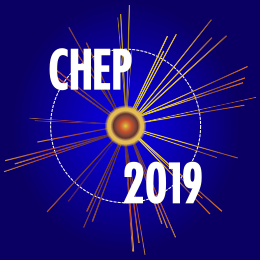Speaker
Description
We present a major overhaul to lepton identification for the Belle II experiment, based on a novel multi-variate classification algorithm.
A key topic in the Belle II physics programme is the study of semi-tauonic B decays to test lepton flavour universality violation, such as $B\rightarrow D^{*}\tau\nu$. The analysis of this decay relies on the capability of correctly separating low momentum, lepton candidates ($e$, $\mu$) in the decay of the $\tau$ from hadronic background. At the mean momentum of $\leq 500$ MeV/c, muons do not reach the dedicated muon detector (KLM) , therefore methods must be developed to identify them with the electromagnetic calorimeter (ECL). Furthermore, at low momenta electrons suffer significant energy losses due to bremsstrahlung, making them more easily mimicked by hadrons.
Boosted decision trees are trained combining measurements from the ECL and tracking system. The chosen observables are sensitive to the different physics that governs interactions of hadrons, electrons and muons with the calorimeter crystals. Dedicated classifiers are used in various detector regions and lepton momentum ranges. The tree output is eventually combined with other classifiers that rely upon independent measurements from other sub-detectors.
Using simulation, the performance of the new algorithm is compared against the method used for analysis of the 2018 Belle II data, namely a likelihood discriminator based on the ratio of energy measured in the ECL over the momentum measured by the trackers. In the critical low momentum region, we largely improve the lepton-pion separation power, increasing background rejection up to 50% for the same electron/muon signal efficiency.
The algorithm has been integrated into the Belle II Analysis Software Framework, and is used in the processing of the 2019 collision dataset. Its performance in the 2019 run will be covered in the presentation.
| Consider for promotion | Yes |
|---|
